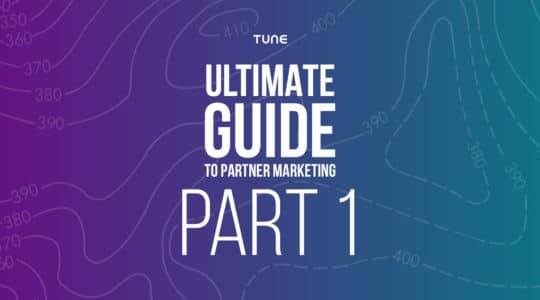
Photo by Anisur Rahman on Unsplash
Every year, we like to make a few predictions for performance based marketing. It’s what we live and breathe, after all. This year, we predicted the rise of more dynamic advertising, artificial intelligence, and personalization. (See the full list here.) Now that we’re closing in on the last quarter of 2018, let’s take a look at how performance marketing has evolved, and what you as a marketer can do to keep pace with this fast-growing industry.
How Performance Based Marketing Has Evolved
One of the most notable changes we’ve seen is how performance marketing is no longer a type of marketing — it is marketing. Think about it: Every business development relationship you build is, at its core, a partnership based on performance.
This has translated into big moves in the digital economy. Nowadays, enterprise companies don’t waste as much time on generic brand campaigns; instead, they spend smarter with strategic partners to ensure every dollar brings value. And small to medium businesses are using performance marketing to scale rapidly, measuring which channels deliver the most growth and optimizing them with the help of their partners.
Marketers are also getting more creative with performance based marketing. It’s no longer about having a static ad plastered across the web. Performance marketers are leveraging video, OTT, social media, native ads, mobile everything, and even audio and IoT tech to reach customers in contextual formats and with more engaging ads.
Along with that comes an increased focus on targeting and personalization. As we predicted in this article, segmenting customers by cohort is becoming outdated. Performance marketers are increasingly moving to segmenting down to the individual — tying together their entire customer journey, preferences, location, and shopping habits to serve the most relevant ads possible (in a GDPR-compliant way, of course).
The Current Landscape
With customers (and the industry as a whole) demanding more personalized experiences, technologies like artificial intelligence (AI) are making it possible. Marketers can use AI to automate advertising decisions, analyze customer behavior, and make decisions much faster and more accurately than they could do with the human mind alone.
Another interesting thing we’re exploring is the undeniable connection between paid and organic marketing. Our research shows that there is a statistically significant lift in organic results with paid advertising. For every paid app install, performance marketers see about 1.5 organic installs.
One of the biggest areas of concern in the performance based marketing landscape of 2018 is fraud. Fraudsters have identified performance marketing as a ripe market that they can attack from multiple angles. It’s so costly, in fact, that digital advertisers will waste $51 million on ad fraud every single day in 2018 … that’s a massive $19 billion over the year. As such, we’re seeing most companies step up to launch their own solutions to combat fraud, or integrate specialized solutions.
Another interesting thing to note is the partnerships developing within performance marketing. Influencer marketing is hotter than ever, and as it teams up with performance based marketing, it’s actually returning some solid ROI. As Facebook and Google advertising becomes so saturated, brands are getting creative to reach new pockets of customers. They’re creating partnerships with smaller, more niche influencers and websites. And they’re incentivizing affiliates and influencers to help spread the word to their followers, too.
How to Keep Up
The pace of innovation and change in technology has never been faster, and as such a marketer’s job has never been more complex (or more stress-inducing, or exciting, or maybe even fun). Here are a few things you as a marketer can do to skillfully navigate the evolving landscape of performance based marketing.
-
Get more granular.
Whereas last-touch attribute used to be the gold standard, now multi-touch attribution is taking center stage. In fact, 45% of marketers told us that’s what they now use. It helps marketers see a more holistic view of how they acquire customers, and give credit where it’s due.
-
Measure more than just acquisition.
Speaking of metrics that matter, marketers should make sure they’re not focusing entirely on acquisition anymore, when there is an entire customer journey to pay attention to. Metrics like long-term value, retention, and engagement all matter just as much, if not more, than just getting customers into your funnel. Optimizing is also an important aspect, ensuring you’re dialing in conversions to get the most impact possible for every dollar you spend.
-
Explore new formats.
If you’ve become a master of one or two channels, try adding a few others to the mix. Video, native ads, OTT, podcasts, and voice are all on the rise. If you explore these relatively untapped territories before the masses do, you’ll be able to tap into undiscovered audiences and your next best customers.
-
Choose a unified platform.
If keeping track of so many customers, platforms, and channels makes your head spin, make it a priority to implement a unified performance marketing platform that ties everything together. (You can try ours free for 30 days.) The right platform will ensure you’re able to measure and manage the partnerships that matter most to your bottom line.
The Marketing Gold Standard
As new technology arises and marketers get more sophisticated at measuring it, performance marketing is set to be the gold standard of marketing. To learn more, check out our thoughts on how AI is changing the performance marketing industry and performance marketing in the media mix.
Author
Becky is the Senior Content Marketing Manager at TUNE. Before TUNE, she handled content strategy and marketing communications at several tech startups in the Bay Area. Becky received her bachelor's degree in English from Wake Forest University. After a decade in San Francisco and Seattle, she has returned home to Charleston, SC, where you can find her strolling through Hampton Park with her pup and enjoying the simple things in life.




Leave a Reply
You must be logged in to post a comment.